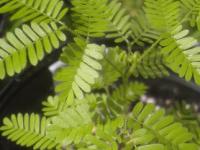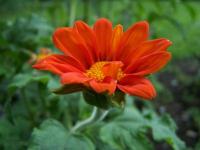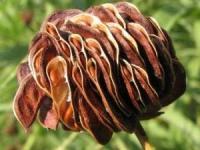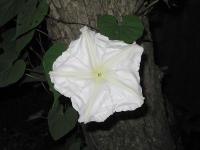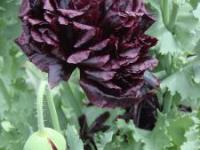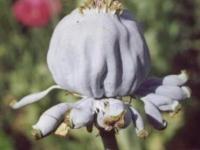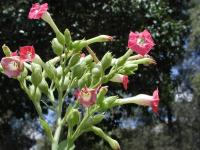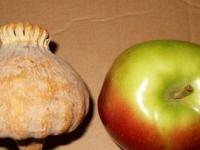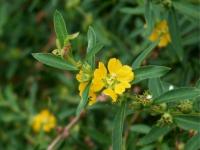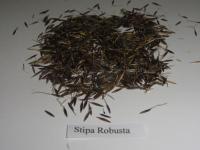Thymus Serpyllum
Creeping Thyme - 100 Seeds
History
Ancient Egyptians used thyme for embalming. The ancient Greeks used it in their baths and burnt it as incense in their temples, believing that thyme was a source of courage. It was thought that the spread of thyme throughout Europe was thanks to the Romans, as they used it to purify their rooms and to "give an aromatic flavour to cheese and liqueurs".[1] In the European Middle Ages, the herb was placed beneath pillows to aid sleep and ward off nightmares. In this period, women would also often give knights and warriors gifts that included thyme leaves as it was believed to bring courage to the bearer. Thyme was also used as incense and placed on coffins during funerals as it was supposed to assure passage into the next life.
Cultivation
Thyme is widely cultivated for its strong flavor, which is due to its content of thymol.[2]
Thyme is best cultivated in a hot sunny location with well drained soil. It is generally planted in the spring and thereafter grows as a perennial. It can be propagated by seed, cuttings, or by dividing rooted sections of the plant. It tolerates drought well.[4] The plants can take deep freezes and are found growing wild on mountain highlands.[citation needed]
[edit]Culinary use
Thymus vulgaris is a source of a very good honey (Castelltallat)
Thyme is a good source of iron and is widely used in cooking. The herb is a basic ingredient in Levantine (Lebanese, Syrian, Jordanian, Palestinian),Libyan, Indian, Italian, French, Albanian, Persian, Portuguese, Assyrian,Spanish, Greek, Nigerian, Caribbean, and Turkish cuisines, and in those derived from them.
Thyme is often used to flavour meats, soups and stews. It has a particular affinity to and is often used as a primary flavour with lamb, tomatoes and eggs.
Thyme, while flavourful, does not overpower and blends well with other herbs and spices. In some Levantine countries, and Assyrian the condiment za'atar(Arabic for thyme) contains thyme as a vital ingredient. It is a common component of the bouquet garni, and of herbes de Provence.
Thyme is sold both fresh and dried. The fresh form is more flavourful but also less convenient; storage life is rarely more than a week. While summer-seasonal, fresh thyme is often available year round.
Fresh thyme is commonly sold in bunches of sprigs. A sprig is a single stem snipped from the plant. It is composed of a woody stem with paired leaf or flower clusters ("leaves") spaced ½ to 1" apart. A recipe may measure thyme by the bunch (or fraction thereof), or by the sprig, or by the tablespoon or teaspoon. If the recipe does not specify fresh or dried, assume that it means fresh.[dubious – discuss]
Depending on how it is used in a dish, the whole sprig may be used (e.g. in a bouquet garni), or the leaves removed and the stems discarded. Usually when a recipe specifies 'bunch' or 'sprig' it means the whole form; when it specifies spoons it means the leaves. It is perfectly acceptable to substitute dried for whole thyme.
Leaves may be removed from stems either by scraping with the back of a knife, or by pulling through the fingers or tines of a fork. Leaves are often chopped.
Thyme retains its flavour on drying better than many other herbs. As usual with dried herbs less of it is required when substituted in a recipe. As a rule of thumb, use one third as much dried as fresh thyme - a little less if it is ground. Substitution is often more complicated than that because recipes can specify sprigs and sprigs can vary in yield of leaves. Assuming a 4" sprig (they are often somewhat longer), estimate that 6 sprigs will yield one tablespoon of leaves. The dried equivalent is 1:3, so substitute 1 teaspoon of dried or ¾ tsp of ground thyme for 6 small sprigs.
As with bay, thyme is slow to release its flavours so it is usually added early in the cooking process.
[edit]Medicinal use
The essential oil of common thyme (Thymus vulgaris) is made up of 20-54% thymol. Thymol, an antiseptic, is the main active ingredient in Listerine mouthwash. Before the advent of modern antibiotics, it was used to medicate bandages. It has also been shown to be effective against the fungus that commonly infects toenails. It can also be found as the active ingredient in all-natural, alcohol-free hand sanitizers.
A tea made by infusing the herb in water can be used for cough and bronchitis. Medicinally thyme is used for respiratory infections in the form of a tincture, tisane, salve, syrup or by steam inhalation. Because it is antiseptic, thyme boiled in water and cooled is very effective against inflammation of the throat when gargled 3 times a day. The inflammation will normally disappear in 2 – 5 days. The thymol and other volatile components in the leaf glands is excreted via the lungs, being highly lipid-soluble, where it reduces the viscosity of the mucus and exerts its antimicrobial action. Other infections and wounds can be dripped with thyme that has been boiled in water and cooled.
In traditional Jamaican childbirth practice, thyme tea is given to the mother after delivery of the baby. Itsoxytocin-like effect causes uterine contractions and more rapid delivery of the placenta, but this was said by Sheila Kitzinger to cause an increased prevalence of retained placenta.
[edit]Important species and cultivars
For a longer list of species, see Thymus (genus).
Variegated lemon thyme
Thymus × citriodorus (synonym T. fragrantissimus, T. serpyllum citratus and T. serpyllum citriodorum) (Citrus Thyme). Cultivars are selected for aromas of different citrus fruits:
Lemon thyme (Thymus × citriodorus) — lemon
Orange thyme (Thymus × citriodorus 'Orange')— orange, unusually low growing
Silver thyme (Thymus × citriodorus 'Argenteus' or variegata)— lemon, variegated with white or yellow
Thymus herba-barona (caraway thyme) is used both as a culinary herb and a groundcover, and has a very strong caraway scent due to the chemical carvone.
Thymus pseudolanuginosus (woolly thyme) is not a culinary herb, but is grown as a ground cover.
Thymus serpyllum (wild thyme, creeping thyme) is an important nectar source plant for honeybees. All thyme species are nectar sources, but wild thyme covers large areas of droughty, rocky soils in southern Europe (Greece is especially famous for wild thyme honey) and North Africa, as well as in similar landscapes in the Berkshire and Catskill Mountainsof the northeastern US. The lowest-growing of the widely used thyme, it is good for walkways.
Thymus vulgaris (common thyme, English thyme, summer thyme, winter thyme, French thyme, or garden thyme) is a commonly used culinary herb. It also has medicinal uses. Common thyme is a Mediterranean perennial which is best suited to well-drained soils and full sun.
Creeping Thyme - 100 Seeds
History
Ancient Egyptians used thyme for embalming. The ancient Greeks used it in their baths and burnt it as incense in their temples, believing that thyme was a source of courage. It was thought that the spread of thyme throughout Europe was thanks to the Romans, as they used it to purify their rooms and to "give an aromatic flavour to cheese and liqueurs".[1] In the European Middle Ages, the herb was placed beneath pillows to aid sleep and ward off nightmares. In this period, women would also often give knights and warriors gifts that included thyme leaves as it was believed to bring courage to the bearer. Thyme was also used as incense and placed on coffins during funerals as it was supposed to assure passage into the next life.
Cultivation
Thyme is widely cultivated for its strong flavor, which is due to its content of thymol.[2]
Thyme is best cultivated in a hot sunny location with well drained soil. It is generally planted in the spring and thereafter grows as a perennial. It can be propagated by seed, cuttings, or by dividing rooted sections of the plant. It tolerates drought well.[4] The plants can take deep freezes and are found growing wild on mountain highlands.[citation needed]
[edit]Culinary use
Thymus vulgaris is a source of a very good honey (Castelltallat)
Thyme is a good source of iron and is widely used in cooking. The herb is a basic ingredient in Levantine (Lebanese, Syrian, Jordanian, Palestinian),Libyan, Indian, Italian, French, Albanian, Persian, Portuguese, Assyrian,Spanish, Greek, Nigerian, Caribbean, and Turkish cuisines, and in those derived from them.
Thyme is often used to flavour meats, soups and stews. It has a particular affinity to and is often used as a primary flavour with lamb, tomatoes and eggs.
Thyme, while flavourful, does not overpower and blends well with other herbs and spices. In some Levantine countries, and Assyrian the condiment za'atar(Arabic for thyme) contains thyme as a vital ingredient. It is a common component of the bouquet garni, and of herbes de Provence.
Thyme is sold both fresh and dried. The fresh form is more flavourful but also less convenient; storage life is rarely more than a week. While summer-seasonal, fresh thyme is often available year round.
Fresh thyme is commonly sold in bunches of sprigs. A sprig is a single stem snipped from the plant. It is composed of a woody stem with paired leaf or flower clusters ("leaves") spaced ½ to 1" apart. A recipe may measure thyme by the bunch (or fraction thereof), or by the sprig, or by the tablespoon or teaspoon. If the recipe does not specify fresh or dried, assume that it means fresh.[dubious – discuss]
Depending on how it is used in a dish, the whole sprig may be used (e.g. in a bouquet garni), or the leaves removed and the stems discarded. Usually when a recipe specifies 'bunch' or 'sprig' it means the whole form; when it specifies spoons it means the leaves. It is perfectly acceptable to substitute dried for whole thyme.
Leaves may be removed from stems either by scraping with the back of a knife, or by pulling through the fingers or tines of a fork. Leaves are often chopped.
Thyme retains its flavour on drying better than many other herbs. As usual with dried herbs less of it is required when substituted in a recipe. As a rule of thumb, use one third as much dried as fresh thyme - a little less if it is ground. Substitution is often more complicated than that because recipes can specify sprigs and sprigs can vary in yield of leaves. Assuming a 4" sprig (they are often somewhat longer), estimate that 6 sprigs will yield one tablespoon of leaves. The dried equivalent is 1:3, so substitute 1 teaspoon of dried or ¾ tsp of ground thyme for 6 small sprigs.
As with bay, thyme is slow to release its flavours so it is usually added early in the cooking process.
[edit]Medicinal use
The essential oil of common thyme (Thymus vulgaris) is made up of 20-54% thymol. Thymol, an antiseptic, is the main active ingredient in Listerine mouthwash. Before the advent of modern antibiotics, it was used to medicate bandages. It has also been shown to be effective against the fungus that commonly infects toenails. It can also be found as the active ingredient in all-natural, alcohol-free hand sanitizers.
A tea made by infusing the herb in water can be used for cough and bronchitis. Medicinally thyme is used for respiratory infections in the form of a tincture, tisane, salve, syrup or by steam inhalation. Because it is antiseptic, thyme boiled in water and cooled is very effective against inflammation of the throat when gargled 3 times a day. The inflammation will normally disappear in 2 – 5 days. The thymol and other volatile components in the leaf glands is excreted via the lungs, being highly lipid-soluble, where it reduces the viscosity of the mucus and exerts its antimicrobial action. Other infections and wounds can be dripped with thyme that has been boiled in water and cooled.
In traditional Jamaican childbirth practice, thyme tea is given to the mother after delivery of the baby. Itsoxytocin-like effect causes uterine contractions and more rapid delivery of the placenta, but this was said by Sheila Kitzinger to cause an increased prevalence of retained placenta.
[edit]Important species and cultivars
For a longer list of species, see Thymus (genus).
Variegated lemon thyme
Thymus × citriodorus (synonym T. fragrantissimus, T. serpyllum citratus and T. serpyllum citriodorum) (Citrus Thyme). Cultivars are selected for aromas of different citrus fruits:
Lemon thyme (Thymus × citriodorus) — lemon
Orange thyme (Thymus × citriodorus 'Orange')— orange, unusually low growing
Silver thyme (Thymus × citriodorus 'Argenteus' or variegata)— lemon, variegated with white or yellow
Thymus herba-barona (caraway thyme) is used both as a culinary herb and a groundcover, and has a very strong caraway scent due to the chemical carvone.
Thymus pseudolanuginosus (woolly thyme) is not a culinary herb, but is grown as a ground cover.
Thymus serpyllum (wild thyme, creeping thyme) is an important nectar source plant for honeybees. All thyme species are nectar sources, but wild thyme covers large areas of droughty, rocky soils in southern Europe (Greece is especially famous for wild thyme honey) and North Africa, as well as in similar landscapes in the Berkshire and Catskill Mountainsof the northeastern US. The lowest-growing of the widely used thyme, it is good for walkways.
Thymus vulgaris (common thyme, English thyme, summer thyme, winter thyme, French thyme, or garden thyme) is a commonly used culinary herb. It also has medicinal uses. Common thyme is a Mediterranean perennial which is best suited to well-drained soils and full sun.
- Brand WSF
00830
Payment Methods


Shipping
FREE Shipping
Shipping Policy
Item is shipped out within 3 business days.
Return/Exchange Policy
Exchanges are accepted but not returns.
Please Login or Register first before asking a question.








